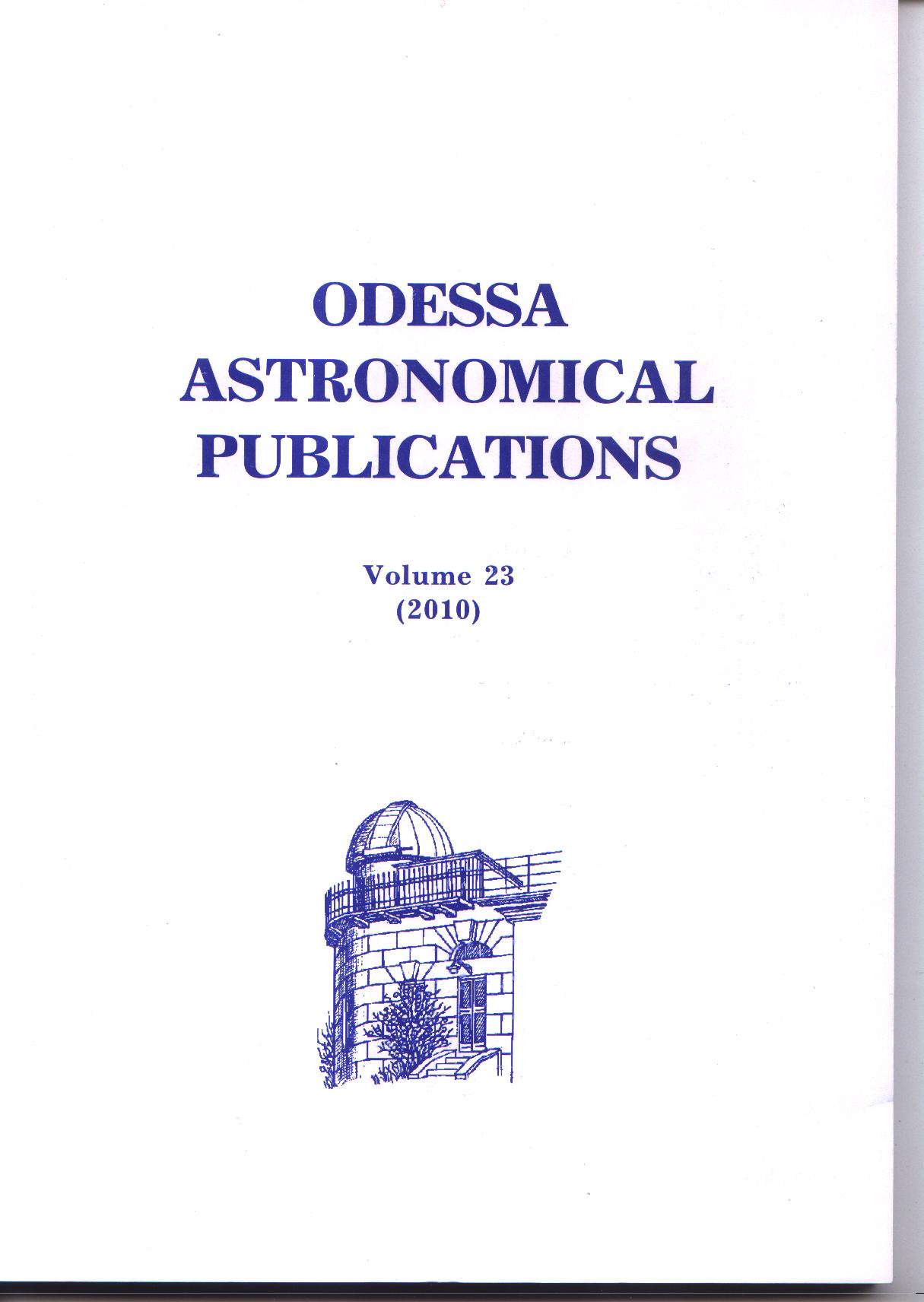PERIOD VARIATIONS IN THE CLOSE BINARY BM UMa
DOI:
https://doi.org/10.18524/1810-4215.2010.23.85256Ключові слова:
Stars, eclipsing variables, period variations, stars, individual, BM UMa.Анотація
We present the results of analysing of the light curve and O–C variations in the eclipsing system BM UMa, based on V-band observations which cover the period from JD 2454933 to 2454961 using two robotic remotely-controlled telescopes of Tzec Maun Observatory (USA) along with observations made with the RK-600 telescope of Odessa Astronomical Observatory. The full light curve displays a total primary eclipse with a duration 0.06 of the period, or 24 minutes, and a partial secondary eclipse, with both maxima of equal magnitude. For our obesrvations, we determined the statistically optimal values of the initial epoch of T0 = 2454944.2814 ± 0.0001 and orbital period of P = 0.d271226± 0.000002. The depths of primary and secondary minima are nearly equal, 0.m838 ± 0.006 and 0.m748 ± 0.006, respectively. The physical parameters of the system were calculated using the Wilson-Devinney code, appended with the Monte Carlo search algorithm. The result establishes BM UMa as a contact system (fillout factor 10.7%) with parameters: mass ratio 0.538 ± 0.001, inclination 86.°815 ± 0.005, and temperatures of components 4700 ± 20 K and 4510 ± 10 K. The more massive component is larger and cooler. The 72 archival and 11 newly-obtained times of light minimum cover the interval 1961-2010 and allowed us to exclude possible systematic period variations in BM UMa and to determine an initial epoch of HJD 2447927.382 and orbital period of P = 0.d2712209± 0.0000006.Посилання
Andronov I.L.: 1994,OAP, 7,49
Andronov I.L.: 2003,ASPC, 292, 391
Bessel M. S.: 1988,PASP, 100, 1134
Bradstreet D.H.: 2005,SASS, 24,23
Bradstreet D.H., Steelman D.P.: 2004,Binary Maker 3 Light Curve Synthesis Program, (Contact Software, Norristown, Pensylvania)
Busch H., Haussler K., Lochel K., Memunger L., Wenzel W., Ziegler E.: 1966,MVS, 4(2),19
Droege T.F., Richmond M.W., Sallman M.P., Creager R.P.: 2006,PASP, 118, 1666
Harmanec P.: 1988,BAICz, 39,6
Hoffmann M.: 1981,IBVS, 1934,1
Hoffmeister C.: 1963,AN, 287, 169
Kreiner J.M., Kim Ch.-H., Nha I.-S.: 2000,An Atlas of O–C Diagrams of Eclipsing Binary Stars,(Krakow, Poland)
Kreiner J.M., Rucinski S., Zola S. et al.: 2003,A&A, 412, 465
Samec R.G., Gray J.D., Carrigan B.J., Kreidl T.J.: 1995,PASP, 107, 136
Skrutskie M.F. et al.: 2006,AJ, 131, 1163
Shugarov S.: 1975,AZh, 88,7
Virnina N.A.: 2010,VSNET-obs, 69159, http://ooruri.kusastro.kyoto-u.ac.jp/mailarchive/vsnet-obs/69159
##submission.downloads##
Опубліковано
Як цитувати
Номер
Розділ
Ліцензія
Авторське право (c) 2016 Odessa Astronomical Publications

Ця робота ліцензується відповідно до Creative Commons Attribution-NonCommercial 4.0 International License.
Відповідно Закону України про авторське право і суміжні права N 3792-XII від 23 грудня 1993 року
